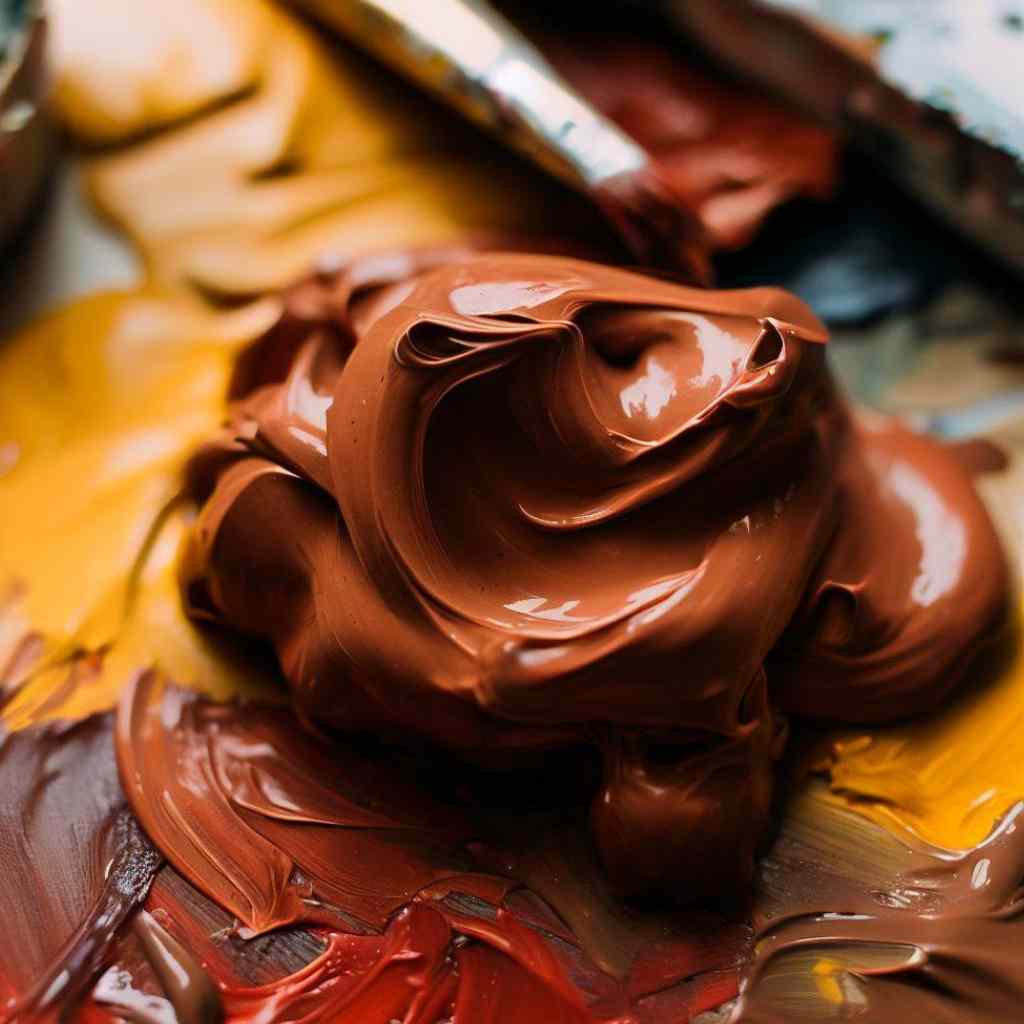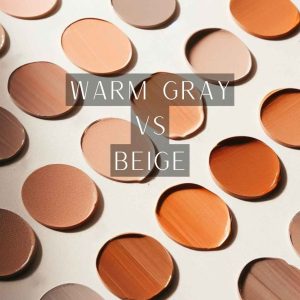Tired of the constant hunt for the perfect shade? The world of art and design often demands that elusive, enchanting dark sienna substitute that seems just out of reach.
In this journey, we’re about to unveil a path toward mastery. Buckle up as we delve into the world of dark sienna substitutes and explore how to transform this challenge into an artistic adventure.
Get ready to unearth the secrets of substitutes that will elevate your artistry to new heights.
What is Dark Sienna?

Dark Sienna derives its name from the Italian city of Siena, known for its rich clay deposits. This pigment is composed of natural iron oxide, imparting its distinctive deep reddish-brown coloration. Its earthy origins give it a grounding and warm presence on the canvas.
Dark Sienna’s versatility shines through in various artistic mediums. From oil paintings to watercolors, it weaves its way into landscapes, portraits, and abstract compositions. In design, Dark Sienna finds its place in interiors, adding a touch of rustic elegance or creating a cozy atmosphere.
Natural Alternatives
When the rich, earthy tones of Dark Sienna beckon, but circumstances call for an alternative, nature provides an array of compelling options.
These natural alternatives not only offer their unique hues but also bring their own set of characteristics and applications to the artistic table-
Burnt Umber: A Close Cousin
Much like Dark Sienna, Burnt Umber emerges from the embrace of nature’s palette. Both share an ancestry of natural iron oxide, creating a familiar earthy foundation.
However, Burnt Umber leans towards a cooler, subdued brown, a distinction that opens doors to nuanced artistic expression.
Burnt Umber finds its forte in creating shadowy depths and defining contours. Its cooler undertones lend themselves splendidly to realistic landscapes and figurative works, providing a touch of authenticity.
Raw Umber: A Lighter Option
Raw Umber, in its unaltered state, presents a lighter, less saturated alternative to the profound depths of Dark Sienna. Its gentle earthiness imparts a subtle warmth, making it an excellent choice for compositions that require a softer touch.
Blending Raw Umber with other earth tones or complementary colors introduces a spectrum of possibilities. This versatile pigment enables artists to craft custom shades that resonate with their artistic vision.
Raw Sienna: A Lighter Alternative
For those inclined towards a departure from Dark Sienna’s profound intensity, Raw Sienna steps in with its lighter, sun-kissed allure. Its golden undertones evoke warmth and light, making it a versatile choice across various artistic applications.
Raw Sienna’s golden hues stand in contrast to Dark Sienna’s deeper, reddish-brown tones. This divergence paves the way for the creation of nuanced effects, especially in the portrayal of natural light and elements.
Raw Sienna’s lighter nature finds resonance in representing natural light sources, making it an excellent choice for sunsets, landscapes, and highlighting architectural details.
However, it may require layering or mixing for specific desired effects.
Synthetic Alternatives
When nature’s palette doesn’t quite match the vision, synthetic alternatives step into the limelight, offering a range of options that boast vibrant hues and modern versatility.
Burnt Sienna: A Darker Option
Burnt Sienna strides forth as a reliable substitute, boasting darker and more pronounced red undertones compared to its counterpart, Dark Sienna. This distinction infuses a heightened sense of drama and intensity into artistic compositions.
The boldness of Burnt Sienna makes it an ideal choice for creating dramatic focal points, capturing twilight’s essence, or imbuing a piece with heightened emotion, allowing it to shine in works that require a commanding presence.
Transparent Oxide Red: The Translucent Choice
Transparent Oxide Red emerges as a unique substitute, thanks to its transparent nature. This quality invites layering and glazing techniques that result in a depth not easily achieved with other alternatives.
Transparent Oxide Red’s translucency grants artists the ability to gradually build up color, creating subtle shifts in tonality. This invaluable trait is instrumental in achieving luminosity and depth in compositions.
This substitute excels in creating translucent glazes, particularly in watercolor and acrylic mediums. It is particularly effective in portraying natural elements like water, skin tones, and atmospheric effects.
Quinacridone Rust: A Modern Substitute
Quinacridone Rust strides forward as a modern synthetic alternative to Dark Sienna. Its vibrant, reddish-brown hues offer a contemporary twist while providing a wide range of applications.
Quinacridone Rust’s synthetic formulation imbues it with an intense vibrancy, allowing artists to create striking focal points and dynamic color harmonies, making it an exceptional choice for compositions that demand a modern, energetic touch.
This substitute thrives in contemporary and abstract compositions, where its vibrant tones can be harnessed to evoke emotion, depth, and energy. It opens up new avenues for artists to express themselves in innovative ways.
Color Theory & Pigments Mixing for Custom Shades
Understanding color theory and mastering the art of pigment mixing is essential when seeking the perfect “dark sienna substitute” for your artwork. Dark Sienna’s unique hue can be replicated by skillfully blending various pigments.
Color theory provides the foundation for this process, guiding artists in the use of primary, secondary, and tertiary colors to create precise shades. By delving into the nuances of warm and cool tones, undertones, and opacity, you can craft a substitute that matches the depth and richness of Dark Sienna.
Experimentation and careful adjustment of mixing ratios are key to achieving your desired custom shade. Whether you’re an experienced artist or a novice, mastering these techniques empowers you to create a bespoke palette that perfectly suits your artistic vision.
How to Make Dark Sienna Substitute by Mixing Colors?
Creating a custom Dark Sienna substitute through color mixing opens up a world of artistic possibilities. With a careful blend of pigments, you can achieve a hue that captures the essence of Dark Sienna.
Materials Needed
Step-by-Step Guide to Make Dark Sienna Substitute by Mixing Colors
- Start with the Base (2 parts): Begin by using Raw Umber as the base of your mixture. This pigment brings a natural earthiness to the blend, providing a solid foundation for the rich, reddish-brown tones reminiscent of Dark Sienna. Its inherent warmth sets the stage for the deeper layers of color that will follow.
- Adding Depth (1 part): To infuse depth and complexity into the mix, introduce Burnt Sienna. This pigment brings a darker, more intense red undertone that aligns with the distinctive character of Dark Sienna. It complements the Raw Umber beautifully, creating a nuanced interplay of hues.
- Enhancing Richness (0.5 parts): For an extra touch of richness and vibrancy, incorporate Transparent Oxide Red into the mixture. This semi-transparent pigment introduces a layer of complexity, allowing the light to interact with the color in a dynamic way. It imparts a luminous quality that can bring your artwork to life.
- Thorough Mixing: Once you’ve added the specified amounts of each pigment, it’s time to blend them together thoroughly. Use a palette knife or brush to mix the colors evenly, ensuring that the pigments meld seamlessly. Take your time with this step to achieve the precise hue that resonates with your artistic vision.
- Testing and Adjusting: Before applying the mixture to your artwork, it’s crucial to conduct a test on a scrap surface or spare canvas. This allows you to evaluate the color under the same lighting conditions as your final piece. If adjustments are needed, you can fine-tune the mixture to achieve the desired effect.
How to Choose the Right Substitute?
Selecting the ideal substitute for a beloved pigment like Dark Sienna requires careful consideration and a discerning eye. Here are some valuable tips to guide you through the process:
- Consider the Medium (Acrylics, Oils, Watercolors): Different mediums interact with pigments in distinct ways. Understanding how substitutes behave in acrylics, oils, or watercolors is crucial for achieving the desired effect. Take the time to experiment with your chosen substitute in your preferred medium to ensure compatibility.
- Assessing Color Undertones and Opacity: Pay close attention to the undertones of your substitute. Dark Sienna’s unique warmth may be replicated differently by various substitutes. Additionally, consider the opacity level of the substitute, as this will affect layering and depth in your artwork.
- Testing on Various Surfaces and Under Different Lighting Conditions: Substitutes may react differently depending on the surface and lighting conditions. Conduct thorough tests on different surfaces and under varying lighting scenarios to gain a comprehensive understanding of how the substitute will perform in the final artwork.
- Experiment with Mixes and Ratios: Don’t be afraid to experiment with mixing different pigments to create custom shades that closely resemble Dark Sienna. Understanding color theory and experimenting with mixing ratios allows you to fine-tune the substitute to your liking.
Frequently Asked Questions
- Can I use multiple dark sienna substitutes together?
Absolutely, using multiple substitutes in tandem offers a broad spectrum of creative possibilities. By combining different substitutes, artists can achieve unique color palettes that add depth and richness to their artwork. This approach encourages experimentation and allows for the discovery of novel color harmonies that may not be achievable with a single substitute alone.
- How do I adjust for opacity differences in dark sienna substitutes?
Adjusting for opacity differences requires a thoughtful approach. If a substitute has a different opacity level compared to the original pigment, consider layering and application techniques. For instance, if the substitute is more translucent, you might need to apply multiple layers to achieve the desired level of coverage. Conversely, if it is more opaque, adjust your application to avoid oversaturation.
- Will the substitute react differently with other colors?
Yes, substitutes may react uniquely when mixed with other colors in your palette. It’s crucial to conduct thorough tests, observing how the substitute interacts with different pigments. Some substitutes may create unexpected color shifts or produce interesting visual effects when combined with specific hues. These interactions can lead to exciting discoveries and contribute to the overall artistic expression of your piece. Experimentation is key in harnessing the full potential of substitutes.
Final Thoughts
As we’re about to wrap up this exploration, the quest for a suitable dark sienna substitute unveils a tapestry of creative possibilities. While Dark Sienna holds its own unique charm, the journey of exploring substitutes has widened the horizon of artistic expression.
Whether it’s the earthy warmth of Burnt Umber, the subdued elegance of Raw Umber, or the golden embrace of Raw Sienna, each alternative brings its own distinctive character to the canvas.
Synthetic options like Burnt Sienna and Transparent Oxide Red add modern vibrancy to the artist’s palette. Through color theory, mixing techniques, and careful consideration of opacity, artists have gained the ability to tailor their palettes to their precise vision.
In this quest for the perfect dark sienna substitute, artists have discovered a wealth of creative potential, expanding the boundaries of what’s possible on the canvas.










